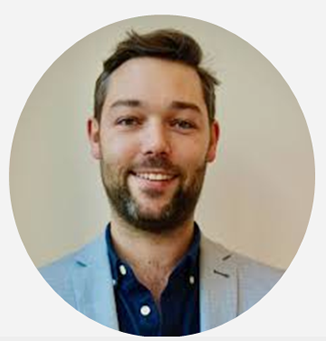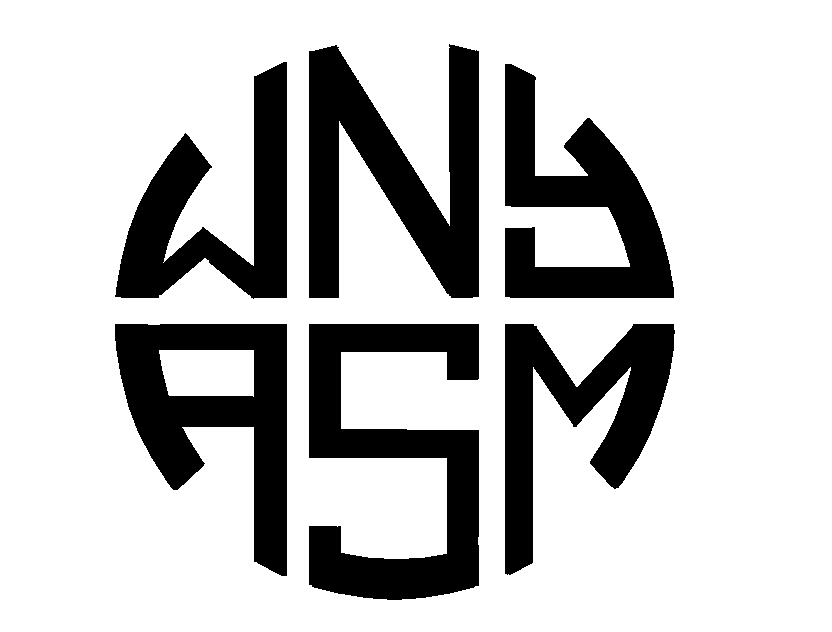2024 Peggy Cotter Award Recipients

Peggy Cotter Award
Jennifer Goff, Ph.D.
Assistant Professor
SUNY College of Environmental Science and Forestry
Chemistry Faculty
From June 13 – 17th 2024, I attended the ASM Microbe meeting in Atlanta, GA. This travel was supported, in part, by the generous Peggy Cotter Award from the Western New York Branch of ASM. Some of the most interesting sessions I attended were in the Opening General Session. First, Stefano Bertuzzi, CEO of ASM, described the new Strategic Framework of the organization. I was delighted to see ASM’s vision for 3 new integrated scientific units—Mechanism Discovery, Applied & Environmental Microbiology, and Health—described in this presentation. This presentation really underscored the interdisciplinary future that ASM sees for the field and, it is my hope, that many of our regional branches that are often more clinically oriented will work to integrate this framework into their organizations. We also learned about ASM’s new global initiatives in Africa, China, and India, which I am excited to see continue to grow because many of my PhD students come from countries outside of the US. I am excited to plug into these international communities of microbiologists. Next, I really enjoyed the panel with the ASM Lifetime Achievement Recipient Rita Colwell. It was inspiring to learn about her journey through the microbiological sciences as a woman, in a time when most PIs were not women. Additionally, I enjoyed learning about her approach to mentorship in the laboratory.
Other interesting sessions that I attended included the Microbial Experimental Evolution in-depth symposium. Since I do experimental evolution in my own work it was exciting to see the novel approaches that others are taking towards this type of research. For example, Joseph Vath (Georgia Tech) gave a very interested presentation on using experimental evolution to probe population dynamics both during and following the removal of a selective pressure, which is relevant to my own work of bacterial evolutionary dynamics during periods of metal stress. I also attended the Microbial Nutrient Encryption session and greatly enjoyed the talk given by Michael Manhart (Rutgers) on developing a quantitative framework for describing nutrient co-limitation in microbial populations. In my own work, I am exploring impacts of co-stress conditions on microbial populations, and this gave me a useful example for how I could develop a quantitative framework in my own research, for example, on multi-metal stress in bacteria.
Outside of attending conference sessions, I also gave my own poster presentation. I was able to share my new data with colleagues in the field and got some ideas for data analyses that I could do. Resulting from this presentation, I was invited to give a seminar on this work at a college in my region. I also re-connected with many old colleagues and met new colleagues. As a part of my work with the ASM Subcommittee on the Status of Women Microbiology (SSWiM), I co-hosted the Women’s reception where I connected with many women microbiologists and answered questions about the work that SSWiM is doing. Since I am starting up a new lab at SUNY ESF, I also used the vendor exhibition to talk to vendors about equipment purchases and services for DNA and RNA sequencing. Overall, it was an extremely productive meeting for me and I am grateful for the financial support that made my attendance possible.

Peggy Cotter Award
Benjamin Hunt , Ph.D.
Postdoctoral Associate
SUNY at Buffalo
Department of Microbiology and Immunology
My trip at the ASM 2024 conference was a great experience overall full of a number of exciting talks and conversations. I was able to attend a number of symposiums that are directly related to my work and interest in bacterial biofilms and polymicrobial interactions. I also was able to expand my understanding of some techniques that were presented by other groups and are directly relevant to my work, one such example was learning that a group has created a protocol for imagining of murine bladder tissue and bacteria using a method called MiPACT-HCR. By attending this meeting and being exposed to their work, my lab now is starting to reach out for a collaboration with this group. Additionally, I was able to present my own work in poster and talk form. It was a fruitful time not only giving my practice, but I received a number of great questions and forged new connections with others in my field. I would say that my trip, which was made possible thanks to the Peggy Cotter Travel Award, was a success as I returned back home to Buffalo with new science knowledge, colleagues to work with, and an appreciation for all the work going on that can be insightful in my own projects.

Peggy Cotter Award
Ashley White, Ph.D.
ZeptoMetrix Corporation
Department of Microbiology and Immunology
I am extremely honored and appreciative of receiving the Peggy Cotter Travel Award for Microbe 2024 that aided me in attending the meeting in Atlanta, Georgia, this year. The science that was showcased at this year’s meeting was nothing less than riveting. There were various session types available to attendees: career talks, courses/workshops, cross-track plenaries, in-depth symposiums, meet the experts, mini-conferences, panel discussions, and track hubs. I am fortunate enough to say I was able to attend at least one of each session type. The topics that I found myself most engrossed with at this year’s meeting were antibiotic resistance, emerging fungal pathogens, and infectious disease diagnostics including but not limited to the increasing development of rapid susceptibility test systems. Interesting to note that these are all topics that were showcased as well on a smaller scale at the Annual WNY ASM Spring Meeting this year.
There were three sessions that stood out as being the most relevant to my current position as a scientist in a bacteriology lab within a manufacturing biotech company (ZeptoMetrix, An Antylia Scientific Company) who’s primary focus is developing innovative solutions to solve challenges in the evolving Diagnostic Microbiology, Infectious Disease, and Oncology markets, as well as provide analytical reference materials for the Applied markets.
The first session was an in-depth symposium titled “Are We Missing Something? The Resurgence of Hard-to-treat Gram-positive Infections”. The focus of this session was to divulge the complex dynamics involved in the resurgence of invasive Group A Streptococcus (iGAS) infections. Such infections have already been on my radar at work, as well as a critical point of interest of the CDC and the New York State Department of Health, which was shared from epidemiologist Caila Vaughn, PhD, MPH during her presentation at the Annual WNY ASM Spring Meeting this year. The majority of GAS infections are relatively mild, presenting as illnesses such as strep throat. However, when GAS becomes iGAS, the infection can become quite severe and at times can be life-threatening. From this session, I was able to attain more information regarding the various factors that have been contributing to this resurgence, right down to the risk factors leading to infection and the diagnosis and treatment/management of the infection. The session also revealed that this resurgence is in part a consequence of weaknesses identified in medical stewardship.
The second session was an in-depth symposium titled “Antifungal Drug Resistance and Emerging Fungal Pathogens”. The focus of this session was to delve into the global increase in invasive fungal infections and the prevalence of multidrug-resistant (MDR) fungi. I personally find discussions about emerging fungal pathogens and their rise in antifungal drug resistance rather alarming, due to the pattern of emergence mirroring that of environmental temperature changes inflicted by climate change. This is a dilemma that will continue to cause a problem for years to come. One particular emerging fungal pathogen that was discussed during this session, Candida auris, was also discussed by epidemiologist Caila Vaughn, PhD, MPH during her presentation at the Annual WNY ASM Spring Meeting this year. The rise of this pathogen represents a serious public health threat. Candida auris causes severe infections associated with a high mortality rate and almost all frontline antifungal agents available are inactive against it. Patients with MDR Candida auris have a 30-day mortality rate between 35 to 60%. The first reported case of a serious infection with Candida auris was in Japan in 2009 and since has become more widespread globally and has become a more common occurrence. This session also revealed that its rapid emergence is in part due to the fact that it has proven difficult to identify and has been spreading its way through hospitals and nursing homes like wildfire.
The third session was an in-depth symposium titled “Beyond Academia: Fulfilling Microbiology Careers Outside the Tenure Track”. The focus of this session was to acknowledge that only a small percentage (~10-30%) of PhD recipients obtain a permanent position in academia, however, graduate programs seem to only focus on preparing those recipients for a future in academia. Thus, the majority of graduates are left with insufficient knowledge and training for the various microbiology careers that are often described as “alternative tracks”, leaving them underprepared to face the job market. From this session, I was able to obtain a wealth of knowledge from those who have experience in making their way past this very obstacle and have gone on to lead very successful careers outside of academia. This topic was extremely relevant for me as an early career scientist, who at this time is pursuing a career in industry.
There was also a plethora of novel approaches to both diagnostics and therapeutic treatments that were showcased during the sessions, as well as within the various booths on display on the vendor floor. The novel approach that constantly stood out above the rest to me (and likely many other attendees) during this year’s meeting was that of rapid susceptibility test systems. This is a topic that was also presented by Peter Trabold, PhD, MBA at the Annual WNY ASM Spring Meeting this year. Rapid and accurate detection of pathogens causing life-threating infections is critical to the on-going struggle we face between duration of diagnosis and appropriate treatment thereafter. This type of technology is proving to revolutionize the fields of clinical and public health microbiology and has the potential to drastically improve patient outcomes.
Beyond the relevance to my current position, I was also able to attend various sessions that were related to my other personal interests such as the “Biofilms Mini-Conference” and “Mini-ASMCUE”. My graduate research and doctoral dissertation heavily involved bacterial biofilms, specifically those found in catheter-associated urinary tract infections (CAUTIs), and I have both training and work experience, but above all passion, for teaching science – specifically microbiology and immunology.
Lastly, while attending this year’s meeting I was able to continue to foster current relationships with colleagues across the field of microbiology, as well as develop new connections that I hope to maintain for years to come. I want to express a huge thank you to WNY ASM, National ASM, and Peggy Cotter for your acknowledgement and support of my endeavors as an early career scientist and my continual growth as a microbiologist.
